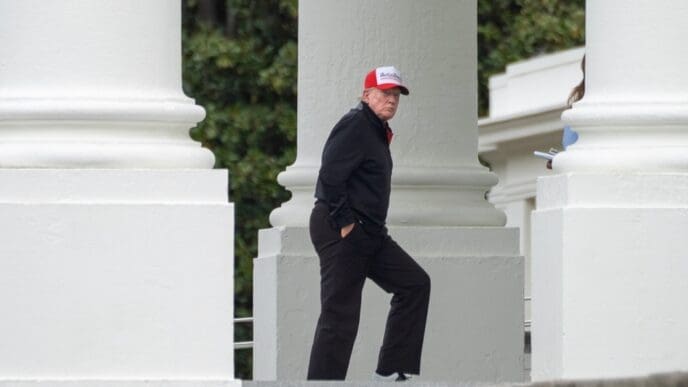Artisans in Guatemala meticulously craft the elegant robes worn by the revered images of Jesus and Mary during the country’s Holy Week processions. This significant Catholic celebration commemorates the passion, death, and resurrection of Jesus Christ and is recognized worldwide for its cultural and religious significance. The event is expected to attract 160,000 international tourists and three million nationals, generating an estimated $340 million, according to government reports. Uniquely, Guatemala’s entire Holy Week celebration is designated as an Intangible Cultural Heritage of Humanity by UNESCO, distinguishing it from specific processions or traditions in countries such as Spain, Colombia, Venezuela, and Switzerland, which have also received recognition.
Walter Gutiérrez, a history professor at the University of San Carlos in Guatemala, highlights that only two places worldwide, Guatemala and Andalusia in Spain, celebrate these Catholic traditions with such fervor. One of the most anticipated processions in the Central American country occurs on Good Friday, known as El Santo Entierro, where the Virgin Mary is portrayed in mourning for her son Jesus’s death. This year, the Virgin will don a black velvet robe with gold-thread embroidered roses and vases, crafted by Alejandro Juárez Toledo, a renowned Guatemalan artisan dedicated to this tradition for 26 years.
Juárez Toledo’s creations originate from his workshop, “María Auxiliadora,” in San Miguel Escobar, a municipality near Ciudad Vieja in Sacatepéquez. These embroidered garments are not only featured in Guatemala but are also showcased in processions in El Salvador, Honduras, Costa Rica, and Panama. For the Virgin’s mourning attire, Juárez Toledo spent months crafting a robe that remains a surprise to the church it graces, maintaining the element of surprise for the audience.
One of the most famous robes was donated by Guatemalan Nobel Laureate in Literature, Miguel Ángel Asturias, to the image of Jesús Nazareno de Candelaria, also known as Cristo Rey. Made in Spain, Asturias gifted the robe in gratitude for his 1967 award, and it was first worn on Holy Thursday in 1969.
The processional parades involve hundreds of carriers who bear wooden structures adorned with revered religious images through the streets, accompanied by musicians and vibrant sawdust carpets decorated with flowers and fruits. A virgin’s mantle can measure up to four square meters and weigh as much as 52 pounds, requiring a specially constructed metal support to distribute the weight and preserve the figure.
Gutiérrez explains that Guatemala’s Holy Week processions are a blend of European cultural influences, introduced in the 16th century, and indigenous Guatemalan traditions. Archaeological findings from the classic period of the ancient Mayan culture reveal the practice of processions in a manner similar to those still held in Guatemala today, often accompanied by musicians. According to Gutiérrez, the survival of these processions in Guatemala is attributed to their self-sustainability, the inclusion of women for over a century, and the constant innovation in aesthetics, attire, and adornments.
The largest procession in the country is the Santo Entierro, which is held in every church, from small communities to major cities. Gutiérrez remarks that the event symbolizes complete humanity, as people gather to accompany the grieving Virgin Mary, although the central figure remains the deceased Christ.
For Juárez Toledo, witnessing one of his creations in these processions is a deeply emotional experience. The most significant moment for him is when the embroidery is mounted on the fabric, sparking a shared emotional journey with the client. Each creation has the potential to be viewed by up to a million people. The design and consultation process for the robes and tunics of Jesus and Mary involve a collaboration between artisans and their clients, typically the brotherhoods or groups organizing the processions and making donations. The garments are crafted from fine fabrics like velvet, with gold or silver thread embroideries, often in floral patterns, sewn onto the mantles.
This year, Juárez Toledo’s workshop employs 28 artisans, predominantly women, who dedicate eight hours daily to complete 18 commissioned pieces on time. However, one need not be Catholic to contribute to the Holy Week imagery. Josefina Lino Cano, an evangelical artisan, is well-known in Guatemala despite her religion’s prohibition against idol worship. She acknowledges facing discrimination but remains grateful for her work, which she views as honorable and approved by God.
Lino Cano’s creations, which can take up to six months to complete, have been sold in El Salvador for around $1,300. During Holy Week, she crafts up to 10 garments but also receives orders for other church commemorations and Christmas, celebrating Christ’s birth. With requests made up to two years in advance, her handiwork adorns images such as the Virgin of Candelaria and the Virgin of the Assumption, the patroness of Guatemala City.
The Tangible Impact
The intricate craftsmanship involved in creating Holy Week garments not only preserves cultural heritage but also stimulates local economies by providing employment to artisans and generating significant tourism revenue. These events foster a sense of community and cultural pride, drawing both international and local visitors to experience Guatemala’s unique religious traditions.
For artisans like Juárez Toledo and Lino Cano, their work goes beyond mere economic gain. It represents a deep-seated connection to cultural and religious expressions that transcend individual beliefs. The vibrant processions and the artistry involved in their preparation offer a sense of continuity and identity, strengthening community bonds and inviting broader participation in cultural heritage preservation.










